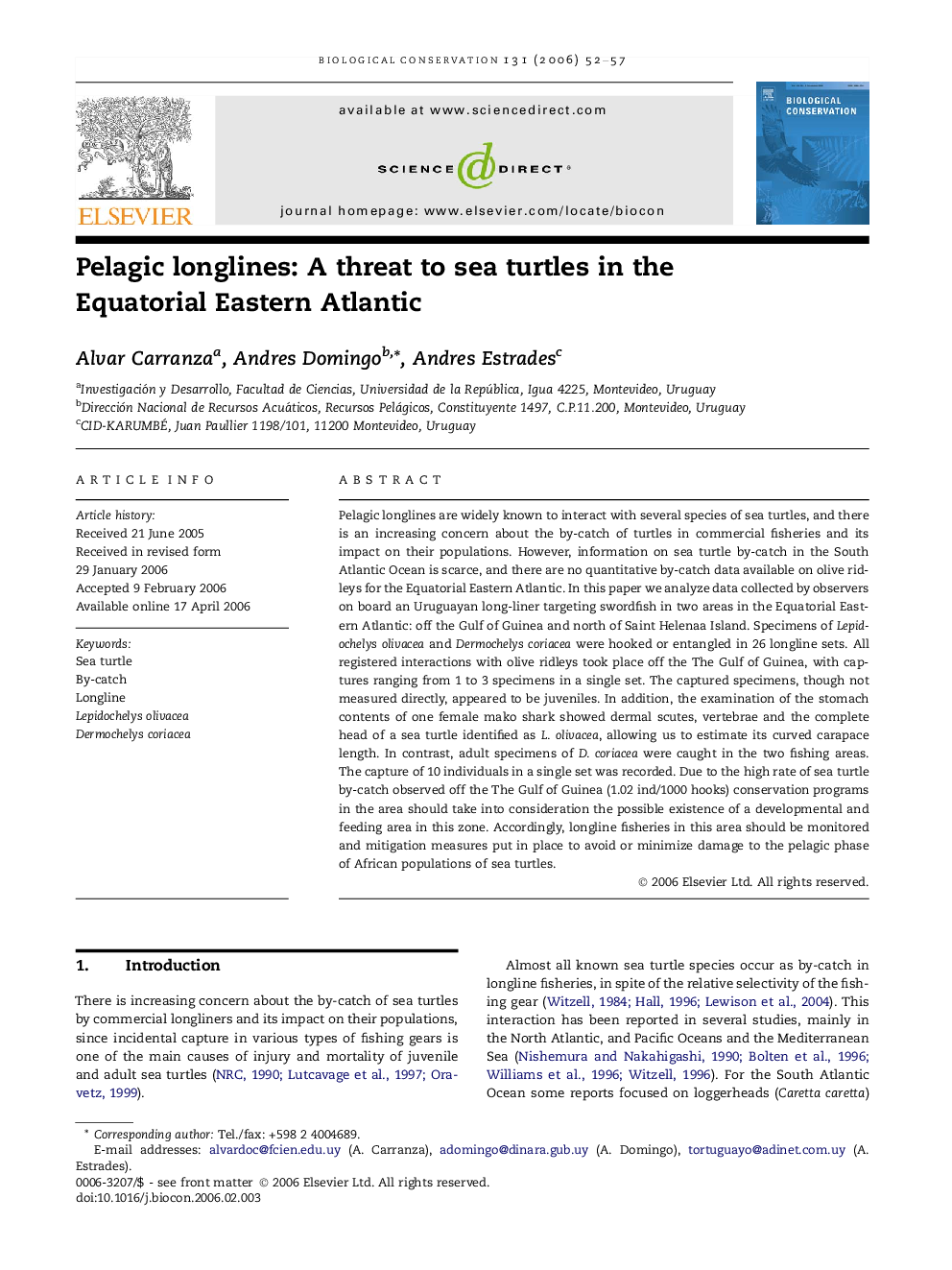| Article ID | Journal | Published Year | Pages | File Type |
|---|---|---|---|---|
| 4387615 | Biological Conservation | 2006 | 6 Pages |
Pelagic longlines are widely known to interact with several species of sea turtles, and there is an increasing concern about the by-catch of turtles in commercial fisheries and its impact on their populations. However, information on sea turtle by-catch in the South Atlantic Ocean is scarce, and there are no quantitative by-catch data available on olive ridleys for the Equatorial Eastern Atlantic. In this paper we analyze data collected by observers on board an Uruguayan long-liner targeting swordfish in two areas in the Equatorial Eastern Atlantic: off the Gulf of Guinea and north of Saint Helenaa Island. Specimens of Lepidochelys olivacea and Dermochelys coriacea were hooked or entangled in 26 longline sets. All registered interactions with olive ridleys took place off the The Gulf of Guinea, with captures ranging from 1 to 3 specimens in a single set. The captured specimens, though not measured directly, appeared to be juveniles. In addition, the examination of the stomach contents of one female mako shark showed dermal scutes, vertebrae and the complete head of a sea turtle identified as L. olivacea, allowing us to estimate its curved carapace length. In contrast, adult specimens of D. coriacea were caught in the two fishing areas. The capture of 10 individuals in a single set was recorded. Due to the high rate of sea turtle by-catch observed off the The Gulf of Guinea (1.02 ind/1000 hooks) conservation programs in the area should take into consideration the possible existence of a developmental and feeding area in this zone. Accordingly, longline fisheries in this area should be monitored and mitigation measures put in place to avoid or minimize damage to the pelagic phase of African populations of sea turtles.
